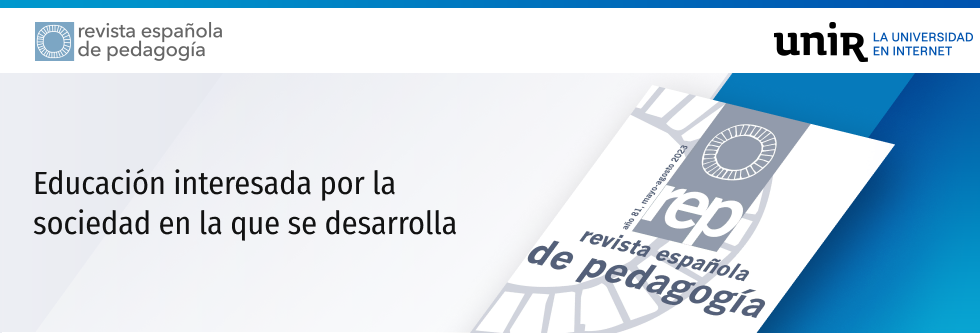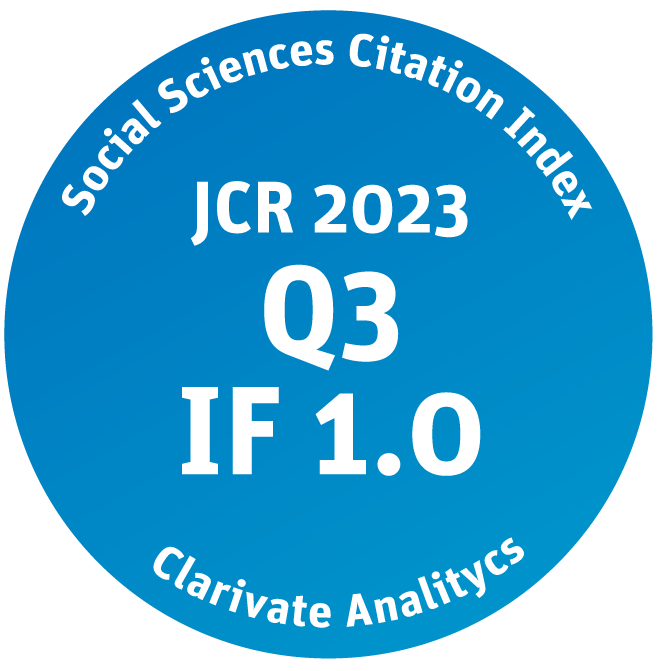Vol. LXXV (2017) - No. 267 Repensar las ideas dominantes en la Educación [Rethinking dominant ideas in education].
Resumen
Many assumptions and foundations in the field of education are seen as absolute truths that are generally accepted and are not questioned. Grupo SI(e)TE performs the task of re-examining some of these dominant ideas in our society, approaching them from a perspective of reflection and commitment to educational work. ,
This book is preceded by a dedication to José Luis Castillejo Brull, the cofounder of the Group who died in December 2016. ,
The book covers twelve topics, each of which focusses on one of the dominant ideas in education. It groups them into three sections that revolve around the thematic axes of politics, school, and society. ,
The first part comprises chapters one to four and focusses on analysing dominant ideas in education from a political perspective. The questions covered are the transmission of values in education, the compulsory status of education, equality, and democracy in schools. ,
The first chapter of this work suggests going beyond the transmission of values, as its interest is not in «offering a pedagogy of the transmission of values, with precise techniques and strategies, but asking ourselves how to make possible a transmission based on the values that must be transmitted so that they can be recreated and lived by citizens and take root in them» (Pérez Alonso-Ge- ta, p. 24). ,
In the second chapter, García Garrido disentangles the question of compulsory schooling. After a historical overview of the matter and faced with the reactions it causes at present, the author comes out «in favour of making it flexible, adapting it to varying circumstances, opening it up to different formal educational pathways and a range of types of educational centres and programmes» (p. 37) in response to the interests of students and the wish- es of their families. He also argues for public authorities to promote integrated education policies. ,
«Equality has become a political keyword, a social demand and the basis of the democratic forms of the state.» With these words Rodríguez Neira (p. 41) starts chapter three. After analysing the contradictions and conflicts deriving from this social demand, the author focusses on the repercussions that the paradigm of the antiauthoritarian school has had on education, and concludes by noting that without authority there is no education, as there is no education without teachers taking responsibility for the present and the future of their students (p. 51). ,
Chapter four poses the question of whether the school should be democratic. This issue is examined by Sarramona who states that «the link between school and democracy is no less complex than the general relationship between society and democracy» (p. 64). The democratic ethos in the educational sphere requires a series of conditions: the existence of a clear set of regulations known by all, being the result of a participatory process, that it can be reviewed, scrutiny of the hidden curriculum as a source of democratic distortion, and the presence of a personal commitment to the group and the institution. ,
The second part of the book comprises chapters five to eight and covers some dominant ideas in education from the perspective of the prevailing social assumptions in educational work: the ideal of excellence, education inside and outside the school, knowledge and know-how, and the language of education. ,
Rodríguez Neira analyses excellence as an educational ideal in chapter five, starting from the position that it is a social and political good, as well as an individual reality. «Excellence is the only resource that can provide us with the pride of being and the only property capable of giving meaning to our daily work» (p. 75). He sees this as an obligation rather than a personal goal that education must facilitate. ,
In chapter six, Colom Cañellas guides us through the topic of «diverse educational universes», education inside and outside the school. The author suggests that we should «consider educational phenomena as a whole and understand them and approach them from a single view- point» and argues for a complementary approach required by the existence of a formal type of education and an informal one, analysed under the umbrella of a unifying theory of education. ,
Vázquez Gómez uses a question for the title of chapter seven: «¿Saber igual a saber hacer?» (Is knowledge the same as know-how?). Here he states that «the focus on know-how, which provides the foundations for competence-based education, is of little use for understanding and resolving complex problems» (p. 100). Human competence is not limited to know-how and involves the «potential for optimising transference», in the author’s own words. ,
Chapter eight concludes this second part. In it, Touriñán considers the topic of language in education. With his normal mastery, he exposes the reality that «in the educational setting, a language empty of content, or with a contrary or even contradictory meaning is sometimes used, developed, and fabricated» (p. 107). He argues for the value of generating concepts pertaining to pedagogy as well as avoiding «opinionitis» the dictatorship of opinion) and the traps that the slogans and metaphors used in education set for us. The solution to this problem requires creating a way of thinking that enables us to account for the «educational» character of the educational activity, because: «1) it meets the criteria for use of the term, 2) through its activities it fulfils the aim of educating, and 3) it fits the real meaning of this action, in other words, it is in accordance with the character traits and meaning that pertain to it» (pp. 123-124). ,
The third part of the work analyses some of the dominant ideas in education from the educational perspective (chapters nine to twelve). The central topics are the relationship between school organisation and didactic methodology, the innovative role of technology, the meaning of educational resources, and the adaptive relationships of education to the students in the educational institution itself. ,
In chapter nine, Colom considers the relationship between school organisation and didactic methods. He indicates that «the mismatch between school organisation and didactic methodology is a constant that continues over time in the most varied ideological contributions» (p. 139), and argues for a new concept of school organisation that is flexible and permeable to the teaching staff’s needs regarding methodology and innovation. ,
In chapter ten, Touriñán states that «every educational action needs resources to be implemented. And the first necessary resource is the one that allows us to progress from knowledge to action» (p. 147). The central topic of this chapter is resources as structural elements of the educational intervention in which the choice of a resource implies support for a specific technology. But we must bear in mind that they must always conform to the activity and meaning of education. Starting from the complexity of the type of resource, he emphasises the distinction between internal and external resources, the former relating to competences, capacities, internal activities (thinking, feeling, wanting, choosing-doing, etc.), and the latter with communal activities that are external to the agent (play, work, study, etc.) and instrumental activities (reading, drawing, dance, calculus, etc.). The importance of resources does not prevent the author from stating that «education is not a problem of resources and more resources,» as this would be to confuse their pedagogical value (p. 162). ,
In chapter eleven, Vázquez Gómez clears up the myth of educational innovation understood as technological innovation. The title itself poses the question «Is educational innovation a matter of technological innovation?» (p. 163), and the piece argues that «this is one of the most dominant pedagogical myths at present». For the author, of course, educational innovation «easily outweighs this technological reductionism», given that «any educational innovation always starts with the introduction of a new idea, whether about the foundations, the processes, or the aims of education» (p. 165). ,
Chapter twelve closes the third part of this work. In it, Sarramona attempts to answer whether education should adapt to the needs of the student. His argument is that «the school must provide the set- ting where these needs can be developed… promoting habits of cooperation, ded- ication, collaboration … through shared learning, performing group tasks, and taking part in activities that respond to social needs» (p. 179). ,
Grupo SI(e)TE, the members of which are the authors of this book, has reconsidered education, deconstructing dominant ideas and myths. As readers, we take away the enjoyment of this work which, with its guidance, will undoubtedly help us reflect on our own educational formulas. Its pedagogical interest is beyond doubt and it is compulsory reading for anyone wishing for a better understanding of the educational problems it covers. ,
María Julia Diz López ■
Citación recomendada | Recommended citation
López, M.
(2023)
.
Vol. LXXV (2017) - No. 267 Repensar las ideas dominantes en la Educación [Rethinking dominant ideas in education]..
Revista Española de Pedagogía(1).
https://www.revistadepedagogia.org/rep/vol0/iss1/61
Licencia Creative Commons | Creative Commons License
Esta obra está bajo una licencia internacional Creative Commons Atribución-NoComercial 4.0.
This work is licensed under a Creative Commons Attribution-NonCommercial 4.0 International License







Commentarios | Comments
Grupo SI(e)TE. Educación (2016).